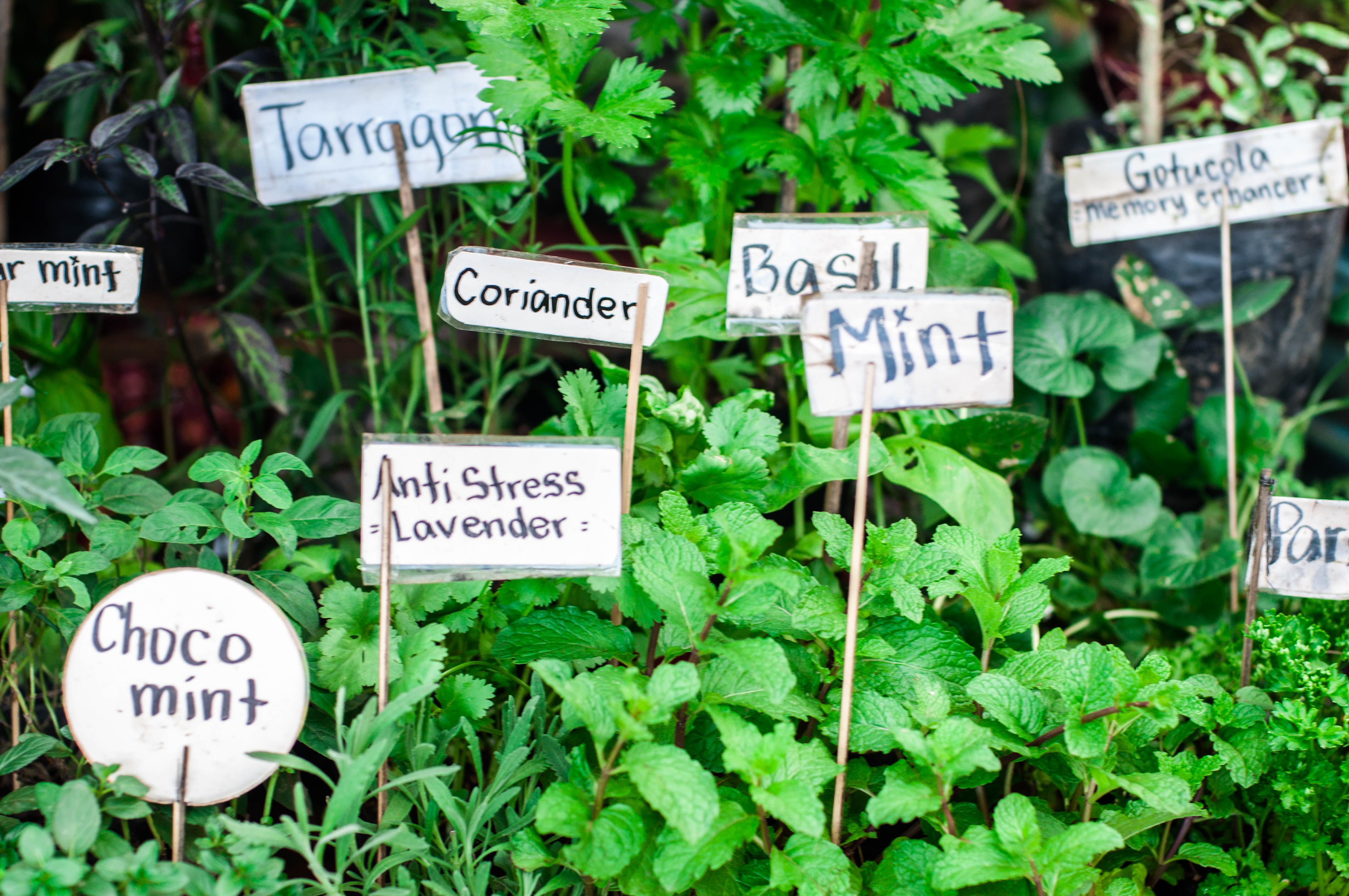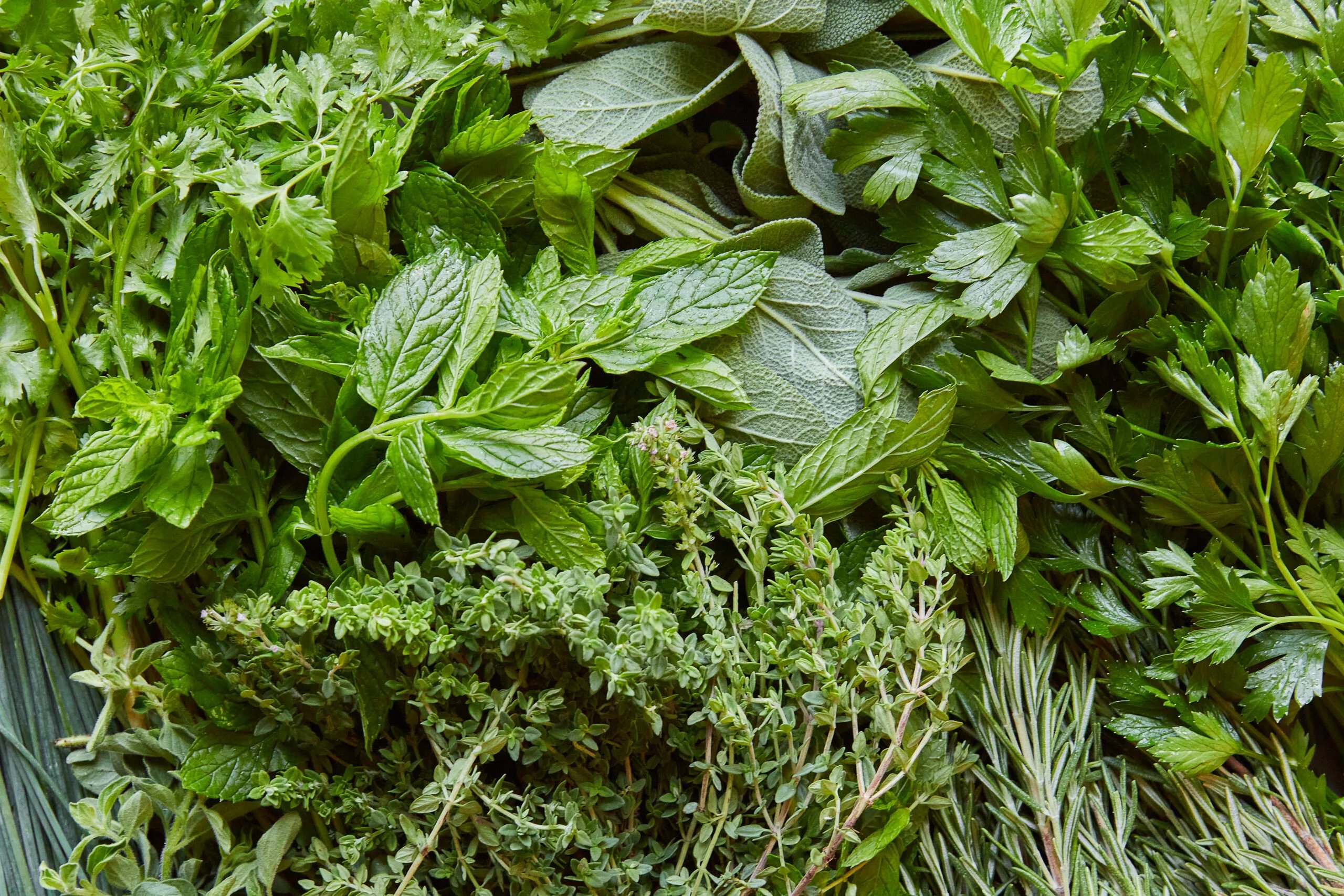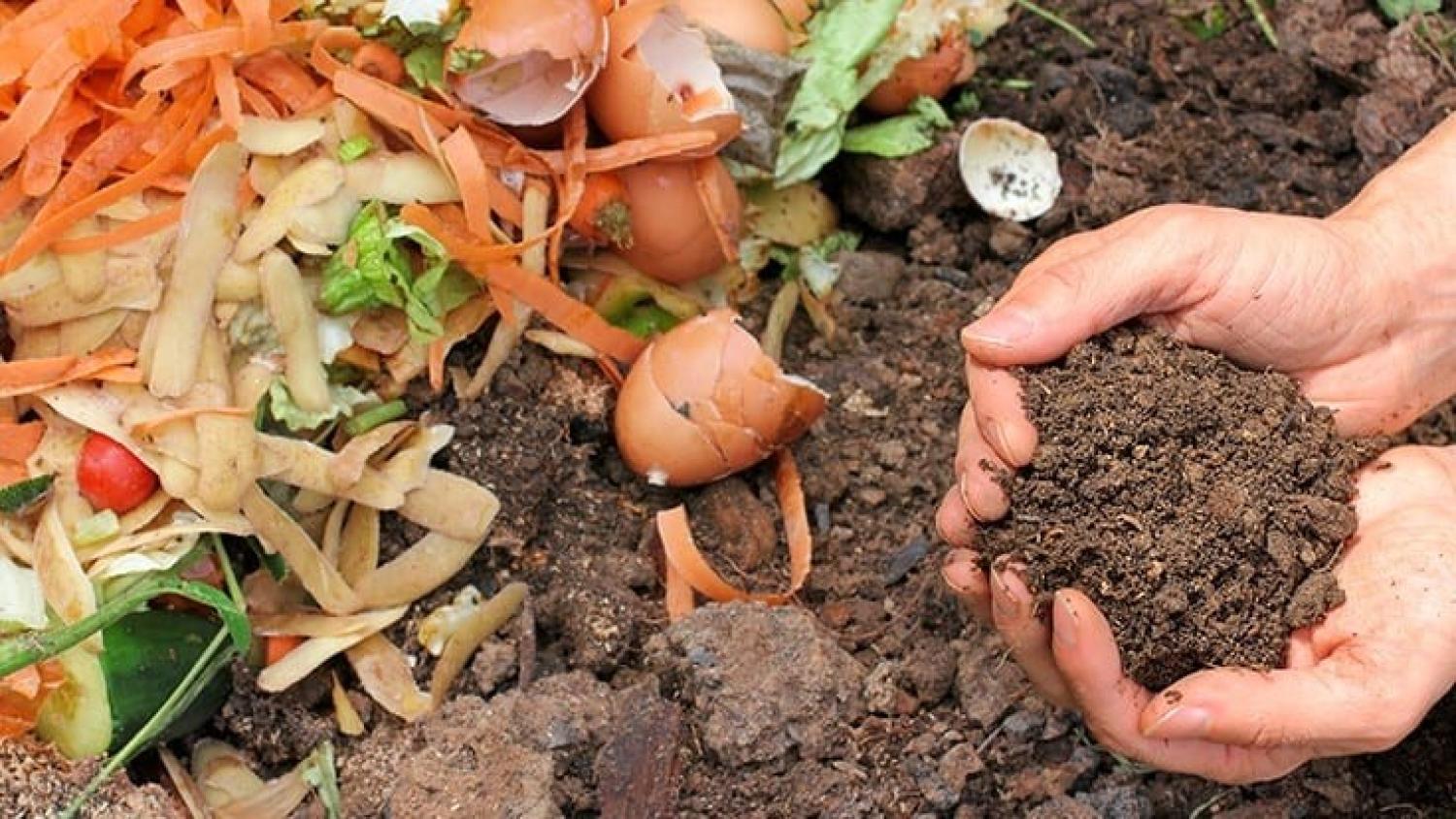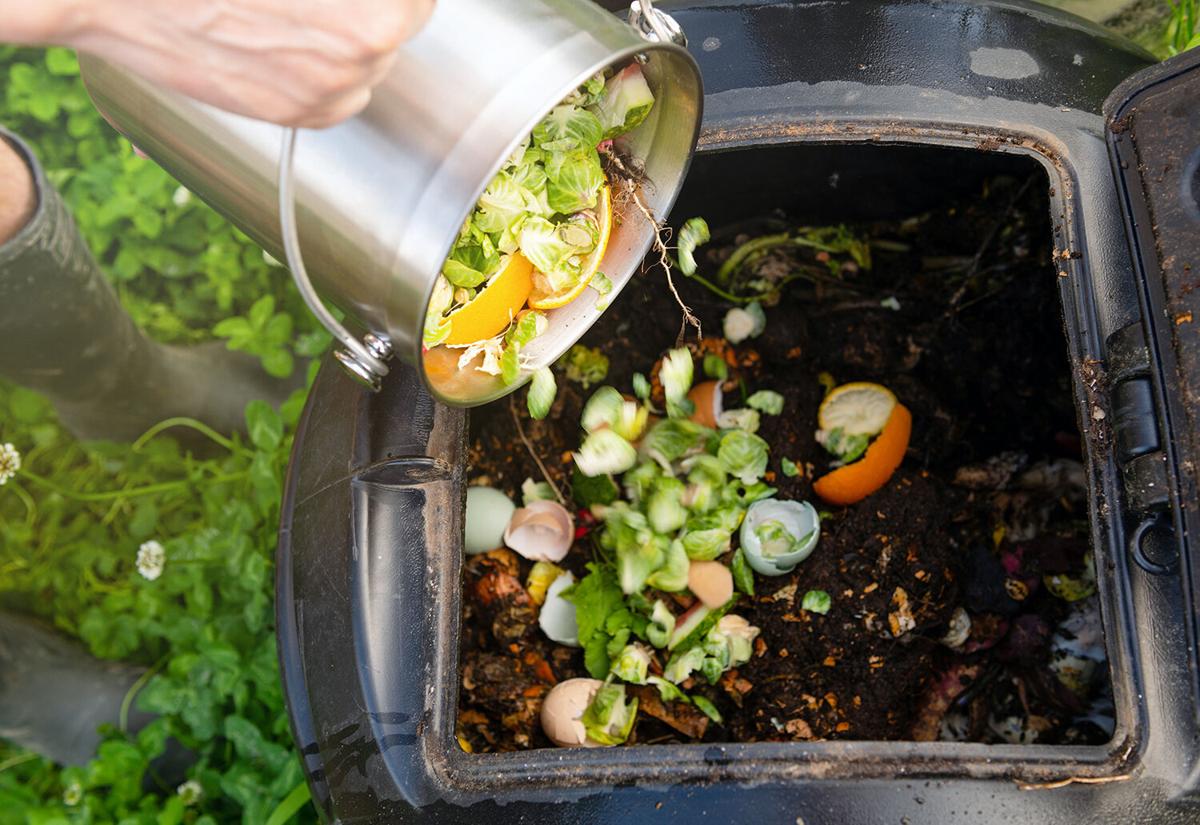Home>Gardening News and Trends>Gardening Trends>What Herbs Do You Put In Stuffing
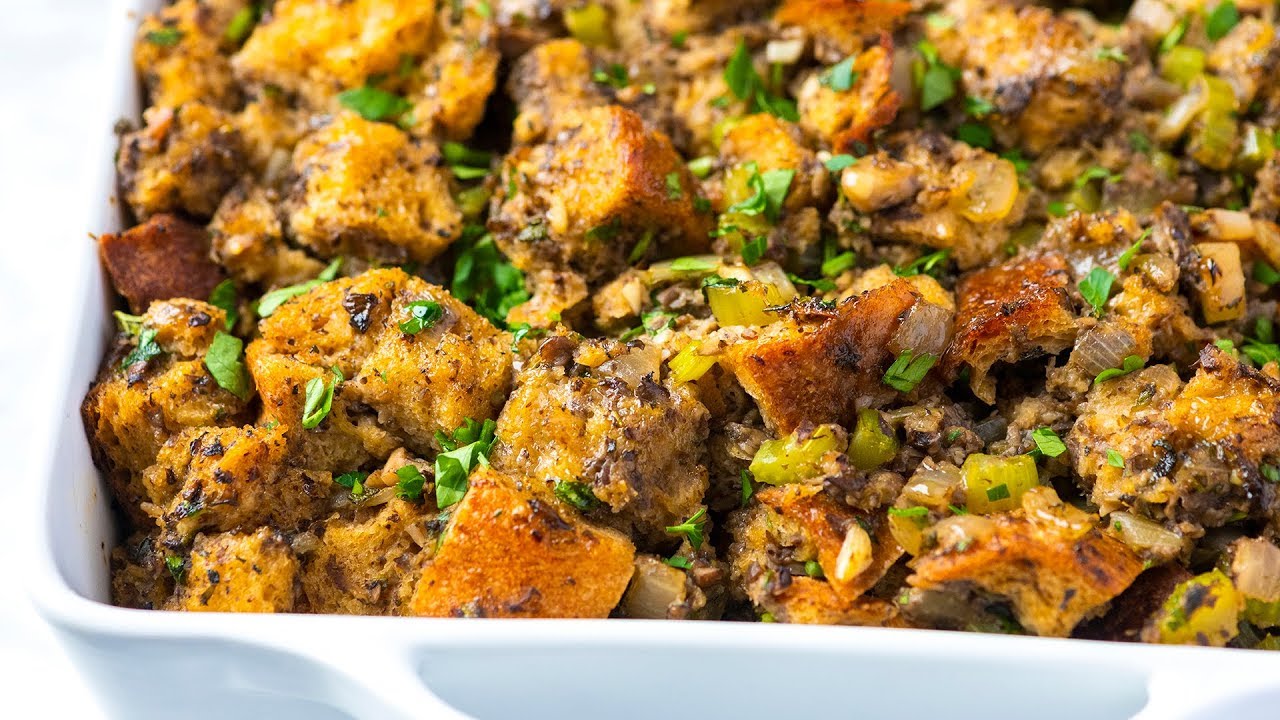

Gardening Trends
What Herbs Do You Put In Stuffing
Modified: January 27, 2024
Discover the latest gardening trends and learn what herbs to include in your stuffing recipe for a flavorful and aromatic twist.
(Many of the links in this article redirect to a specific reviewed product. Your purchase of these products through affiliate links helps to generate commission for Chicagolandgardening.com, at no extra cost. Learn more)
Table of Contents
Introduction
When it comes to creating a flavorful and delicious stuffing, herbs play a vital role. They add depth, aroma, and a burst of freshness to the dish, elevating it from ordinary to extraordinary. But with so many herbs to choose from, it can be challenging to determine which ones are best suited for your stuffing recipe. In this article, we will explore the top herbs commonly used in stuffing and provide insights on how to choose the right ones for your culinary masterpiece.
Stuffing, also known as dressing, is a staple dish during holiday gatherings and special occasions. It is a delectable combination of bread or breadcrumbs, aromatic vegetables, and a variety of herbs and spices. The herbs used in stuffing not only contribute to the flavor profile but also infuse the dish with their unique characteristics.
Whether you prefer a traditional sage-infused stuffing or want to experiment with different herb combinations, understanding the role each herb plays will help you achieve a stuffing that is bursting with flavor. So, let’s dive into the fascinating world of herbs and explore the top herbs commonly used in stuffing recipes.
Herbs commonly used in stuffing
When it comes to stuffing, there are several herbs that are widely used to enhance the flavors and aromas of the dish. Each herb brings its own unique characteristics, making them perfect for adding depth and complexity to your stuffing recipes. Here are some of the most commonly used herbs:
- Sage: Sage is often considered the king of herbs when it comes to stuffing. Its earthy, slightly peppery flavor adds a distinct warmth and richness to the dish. Sage pairs exceptionally well with poultry and pork, making it a classic choice for Thanksgiving or Christmas stuffing.
- Thyme: Thyme is an incredibly versatile herb that complements a wide range of flavors. Its subtle, slightly minty taste adds a refreshing note to stuffing. Thyme blends well with other herbs and spices, allowing it to enhance the overall complexity of the dish.
- Rosemary: Known for its fresh and fragrant aroma, rosemary adds a delightful pine-like flavor to stuffing. Its intense herbal notes pair well with roasted meats, making it a popular choice for savory stuffing recipes.
- Parsley: While parsley is often used as a garnish, it also adds a bright and herbaceous flavor to stuffing. The vibrant green color and fresh taste of parsley bring a refreshing element to the dish, balancing out the richness of other ingredients.
- Marjoram: Marjoram has a slightly sweeter and more delicate flavor than oregano. Its aromatic and earthy notes enhance the overall taste of stuffing and pair well with meats, vegetables, and other herbs.
- Savory: This herb lives up to its name, adding a savory and peppery taste to stuffing. Savory works particularly well with pork and poultry, infusing the dish with a unique and robust flavor.
- Oregano: Known for its strong flavor, oregano brings a bold and slightly bitter taste to stuffing. Its robust profile pairs well with Mediterranean-style dishes and adds complexity to the overall flavor profile.
- Tarragon: Tarragon has a distinct anise-like flavor that adds a hint of licorice to stuffing. Its unique taste can provide a refreshing contrast to rich and savory ingredients.
- Basil: While basil is commonly associated with Italian cuisine, it can also lend its aromatic and slightly sweet flavor to stuffing recipes. Basil adds a fresh and vibrant element to the dish, brightening up the overall flavors.
- Dill: Dill brings a unique and refreshing flavor to stuffing. Its tangy, slightly sweet taste pairs well with fish and poultry, adding a burst of freshness to the dish.
- Bay leaves: Although bay leaves are not typically used in their fresh form, they are commonly added to simmering liquids to infuse dishes with their subtle, herbal flavor. Including a bay leaf or two in your stuffing mix can contribute to its overall complexity.
These herbs are just a starting point, and you can experiment with different combinations to create a stuffing that suits your taste preferences. The key is to balance the flavors and allow the herbs to enhance the overall taste and aroma of your dish.
Sage
Sage is a herb that is widely recognized for its strong and distinct flavor. It belongs to the mint family and is native to the Mediterranean region. Sage leaves have a soft and velvety texture with a grayish-green color, and they are known for their slightly peppery taste.
When it comes to stuffing, sage is often considered the go-to herb. Its robust and earthy flavor pairs exceptionally well with poultry, making it a staple in Thanksgiving and holiday stuffing recipes. The warm, aromatic notes of sage bring a depth and richness to the dish, enhancing the overall savory profile.
There are different ways to incorporate sage into your stuffing. You can finely chop the leaves and mix them directly into the stuffing mixture, ensuring that the flavor is distributed evenly throughout. Alternatively, you can opt for whole sage leaves, placing them strategically on top of the stuffing or using them to garnish the dish before serving.
Sage can be used both in fresh and dried forms. However, fresh sage tends to have a more intense flavor and aroma. If using dried sage, it’s important to remember that its flavor can be more concentrated, so adjust the amount accordingly.
Aside from its flavor, sage also offers health benefits. It is rich in antioxidants and compounds that have anti-inflammatory properties, making it a valuable addition to your diet. So, not only does sage contribute to the deliciousness of your stuffing, but it also adds a nutritional boost.
In addition to stuffing, sage can also be used in a variety of other dishes. It pairs well with meats, stews, soups, and even pasta sauces, adding a unique and aromatic touch. Whether you grow your own sage or purchase it from a local market or grocery store, incorporating this versatile herb into your culinary creations is sure to impress.
Next time you prepare stuffing, don’t forget to include sage in your herb lineup. Its distinctive flavor will elevate your dish to new heights, leaving your taste buds satisfied and wanting more.
Thyme
Thyme is a versatile and aromatic herb that adds a touch of freshness to dishes. It is native to the Mediterranean region and has been widely used in cooking for centuries. Thyme leaves are small, with a gray-green color and a fragrant scent.
When it comes to stuffing, thyme is a popular choice due to its subtle, minty flavor and ability to blend well with other herbs and spices. It adds a refreshing note to the dish without overpowering the other ingredients. Thyme pairs exceptionally well with poultry, making it an excellent addition to stuffing for chicken, turkey, or even game meats.
There are various ways to incorporate thyme into stuffing. You can use fresh thyme leaves by chopping them finely and mixing them into the stuffing mixture. This allows the herb to infuse the entire dish with its aromatic essence. Alternatively, you can use whole sprigs of thyme as a garnish, placing them strategically on top of the stuffing for a visual appeal and an added aroma.
Thyme is available in both fresh and dried forms. While fresh thyme offers a more vibrant flavor and aroma, dried thyme can be just as effective. If using dried thyme, it’s important to remember that its flavor is more concentrated, so adjust the quantity to your taste preference.
Aside from its culinary uses, thyme offers several health benefits. It is known for its antimicrobial and antioxidant properties, which can help boost the immune system and promote overall well-being. Thyme also contains vitamins and minerals that contribute to a healthy diet.
Incorporating thyme into your cooking repertoire goes beyond stuffing. This versatile herb can be used in a wide range of dishes, including roasted meats, soups, stews, marinades, and sauces. It adds a distinct flavor profile and a pleasant aroma to any recipe.
Whether you choose to grow your own thyme or purchase it from your local market or grocery store, having this herb on hand will enhance your culinary creations. So, the next time you prepare stuffing, consider adding a sprinkle of thyme to take it to the next level of deliciousness.
Rosemary
Rosemary is a fragrant and flavorful herb that adds a delightful aroma to dishes. It is native to the Mediterranean region and has been used in cooking for centuries. Rosemary leaves are long, narrow, and have a dark green color with a woody stem.
When it comes to stuffing, rosemary is a popular choice for its intense herbal flavor and ability to enhance the savory profile of the dish. Its distinct pine-like taste adds a unique depth that complements both meat-based and vegetarian stuffings.
There are several ways to use rosemary in stuffing. One option is to finely chop the leaves and mix them directly into the stuffing mixture, allowing the herb to infuse its flavor evenly throughout. You can also use whole sprigs of rosemary to garnish the dish or place them strategically on top of the stuffing for an added visual appeal.
Rosemary is available in both fresh and dried forms. While fresh rosemary offers a more intense flavor and aroma, dried rosemary can be a convenient alternative. Keep in mind that dried rosemary has a more concentrated flavor, so adjust the quantity accordingly to avoid overpowering the other ingredients.
Aside from its culinary uses, rosemary has several health benefits. It is rich in antioxidants and anti-inflammatory compounds, which may help improve digestion, boost the immune system, and support overall wellness. The aroma of rosemary is also known to have a calming effect on the mind and enhance mental focus.
Rosemary can be utilized in a variety of dishes beyond stuffing. It pairs well with roasted meats, potatoes, soups, and even bread. Infusing olive oil with rosemary creates a flavorful herb-infused oil that can be used in cooking or as a dipping sauce.
Whether you have a rosemary plant in your garden or purchase it from a local market, incorporating this versatile herb into your stuffing recipe will add a unique and aromatic twist to the dish. So, next time you prepare stuffing, consider adding a sprig or two of rosemary to elevate the flavors to a whole new level of deliciousness.
Parsley
Parsley is a bright and herbaceous herb that brings a fresh and vibrant flavor to dishes. It is native to the Mediterranean region and is widely used in various cuisines around the world. Parsley leaves are flat, dark green, and have a delicate texture.
When it comes to stuffing, parsley is often used to add a touch of brightness and balance to the dish. The fresh and slightly peppery taste of parsley complements the richness of other ingredients, making it an excellent addition to both meat-based and vegetarian stuffings.
There are a few different ways to incorporate parsley into stuffing. You can finely chop the leaves and mix them directly into the stuffing mixture, ensuring the herb is evenly distributed. Another option is to use whole parsley leaves as a garnish, sprinkling them on top of the stuffing or using them to decorate the dish before serving.
Parsley is available in both flat-leaf (Italian) and curly varieties. While both types can be used in stuffing, flat-leaf parsley is often preferred for its stronger flavor and easier handling. However, if you enjoy the more delicate taste and texture of curly parsley, feel free to use it in your stuffing recipes.
Besides its flavor, parsley also offers numerous health benefits. It is rich in vitamins A, C, and K, as well as folate and antioxidants. Parsley is known for its ability to support digestion, boost immune function, and promote overall well-being.
Parsley can be used in a wide range of dishes beyond stuffing. It adds a fresh and herbaceous touch to salads, soups, sauces, and marinades. You can also use it as a garnish to enhance the visual appeal of your culinary creations.
Whether you grow parsley in your garden or purchase it from a local market, incorporating this versatile herb into your stuffing will elevate the flavors and provide a burst of freshness. So, the next time you prepare stuffing, don’t forget to include a generous amount of parsley to enhance the overall taste and presentation of the dish.
Marjoram
Marjoram is an herb that is closely related to oregano and is known for its delicate and sweet flavor. It is native to the Mediterranean region and has been used in cooking for centuries. Marjoram leaves are small and ovate, with a subtle green color and a fragrance reminiscent of pine and citrus.
When it comes to stuffing, marjoram is a popular herb for its aromatic and earthy taste. It adds a slightly floral note to the dish, which can enhance the overall flavor profile. Marjoram blends well with other herbs and spices and complements both meat-based and vegetarian stuffings.
There are a few different ways to incorporate marjoram into your stuffing. You can finely chop the leaves and mix them directly into the stuffing mixture to infuse the herb’s flavor throughout. Alternatively, you can use whole sprigs of marjoram as a garnish, placing them strategically on top of the stuffing to add a visual appeal and an aromatic touch.
Marjoram can be used in both fresh and dried forms. Fresh marjoram leaves offer a more vibrant flavor and aroma, while dried marjoram can be a convenient option. When using dried marjoram, keep in mind that its flavor is more concentrated, so adjust the quantity accordingly to maintain a balance with the other ingredients.
In addition to its culinary uses, marjoram also offers several health benefits. It is known for its antioxidant and anti-inflammatory properties, which can support overall well-being. Marjoram is also believed to aid digestion and promote relaxation.
Marjoram can be used beyond stuffing in a variety of dishes. It pairs well with roasted meats, tomatoes, vegetables, and even cheese. The herb’s delicate and slightly sweet flavor adds a unique twist to recipes, enhancing the overall taste.
Whether you cultivate marjoram in your garden or purchase it from a local market, incorporating this versatile herb into your stuffing will add a delightful aromatic layer to the dish. The next time you prepare stuffing, consider adding marjoram to create an unforgettable flavor experience.
Savory
Savory is an herb that lives up to its name, adding a savory and peppery taste to dishes. It is a member of the mint family and is known for its robust and bold flavor. Savory leaves are small and elongated, with a vibrant green color.
When it comes to stuffing, savory is a fantastic herb choice. Its pungent and slightly spicy flavor adds an extra layer of complexity to the dish, making it a popular addition to meat-based stuffings. Savory is particularly well-suited for stuffing made with pork and poultry, providing a unique and robust taste.
There are various ways to incorporate savory into your stuffing recipe. You can finely chop the leaves and mix them directly into the stuffing mixture, ensuring even distribution of the herb’s flavor. Alternatively, you can use whole savory leaves as a garnish, placing them strategically on top of the stuffing before baking for added visual appeal.
Savory is available in both dried and fresh forms. While both versions can be used, fresh savory is often preferred for its more vibrant flavor and aroma. Dried savory is a suitable alternative, but keep in mind that its flavor can be more concentrated, so adjust the quantity accordingly to avoid overpowering other ingredients.
In addition to its flavor, savory offers potential health benefits. It is known for its antimicrobial and antioxidant properties, which can help support the immune system and promote overall wellness. Savory is also believed to aid digestion and improve appetite.
Savory can be used not only in stuffing but also in a variety of dishes. It pairs well with roasted meats, sausages, stews, and soups. Its bold and savory taste adds depth to recipes and can take your culinary creations to the next level.
Whether you grow your own savory or purchase it from a local market, adding this herb to your stuffing will infuse the dish with its distinct flavor. The next time you prepare stuffing, consider incorporating savory for a delicious and savory experience.
Oregano
Oregano is a versatile herb renowned for its strong and robust flavor. Native to the Mediterranean region, oregano has been used in cooking for centuries. Oregano leaves are small and have a slightly fuzzy texture with a deep green color.
When it comes to stuffing, oregano adds a bold and slightly bitter taste that enhances the overall flavor profile of the dish. Its aromatic and earthy notes make it a popular choice for Mediterranean-inspired stuffings and those containing poultry or red meats.
There are different ways to incorporate oregano into your stuffing. You can finely chop the leaves and mix them directly into the stuffing mixture, allowing the flavors to infuse. Another option is to use whole sprigs of oregano as a garnish, placing them strategically on top of the stuffing to add visual appeal and an additional burst of flavor.
Oregano is available in both fresh and dried forms. While fresh oregano offers a more vibrant flavor and aroma, dried oregano is a convenient alternative. Keep in mind that dried oregano has a more concentrated flavor, so adjust the quantity accordingly to avoid overpowering the other ingredients.
Besides its culinary uses, oregano also offers potential health benefits. It is rich in antioxidants and has antimicrobial properties that can support the immune system. Oregano may also possess anti-inflammatory properties and aid in digestion.
Oregano is a versatile herb that can be used in various dishes beyond stuffing. It pairs well with tomatoes, grilled vegetables, pasta sauces, and marinades. Its robust flavor adds depth and complexity to recipes, making them more enticing and flavorful.
Whether you grow your own oregano or purchase it from a local market, incorporating this herb into your stuffing will add a pronounced and distinctive taste. The next time you prepare stuffing, don’t forget to include oregano for a flavorful and aromatic experience.
Tarragon
Tarragon is a unique and aromatic herb that adds a touch of elegance to dishes. It is native to Eurasia and has a distinct anise-like flavor with hints of vanilla and licorice. Tarragon leaves are long and slender, with a bright green color.
When it comes to stuffing, tarragon is a herb that can bring a refreshing and delicate taste to the dish. Its unique flavor complements both meat-based and vegetarian stuffings, adding a subtle sweetness and a hint of licorice. Tarragon is particularly popular in French cuisine, where it is often used in stuffing recipes.
There are different ways to incorporate tarragon into stuffing. You can finely chop the leaves and mix them directly into the stuffing mixture, ensuring the herb is evenly distributed. Another option is to use whole tarragon sprigs as a garnish, placing them on top of the stuffing or using them to decorate the dish before serving.
Tarragon is available in fresh and dried forms, with both offering their unique benefits. Fresh tarragon leaves have a more pronounced flavor and aroma, while dried tarragon has a more concentrated taste. Adjust the quantity accordingly to maintain the right balance of flavors.
Beyond its flavor profile, tarragon also offers potential health benefits. It contains antioxidants and has been utilized in traditional herbal medicine for its digestive and calming properties. Tarragon may also help stimulate the appetite.
Tarragon can be used not only in stuffing but also in a variety of other dishes. It pairs well with chicken, fish, eggs, and vegetables. Its delicate and aromatic taste adds a French-inspired touch to recipes and elevates the overall dining experience.
Whether you grow tarragon in your garden or purchase it from a local market, incorporating this herb into your stuffing will bring a unique and sophisticated flavor. The next time you prepare stuffing, consider adding tarragon for a delightful and distinctive culinary experience.
Basil
Basil is a highly aromatic and versatile herb that is known for its fresh and vibrant flavor. It is native to the Mediterranean region and is widely used in various cuisines around the world. Basil leaves are broad, tender, and have a vibrant green color.
When it comes to stuffing, basil can bring a burst of brightness and herbaceousness to the dish. Its slightly sweet and peppery taste complements both meat-based and vegetarian stuffings, adding a refreshing and aromatic element.
There are different ways to incorporate basil into your stuffing. You can finely chop the leaves and mix them directly into the stuffing mixture, allowing the flavors to blend together. Another option is to use whole basil leaves as a garnish, placing them on top of the stuffing for a visually appealing touch.
Basil is best used fresh to fully appreciate its vibrant flavor and aroma. You can easily grow basil in your garden or purchase it from a local market or grocery store. Its delicate leaves should be added towards the end of cooking or sprinkled fresh on top of the stuffing just before serving to preserve their freshness and vibrant taste.
In addition to its delightful flavor, basil offers several health benefits. It is packed with antioxidants and has anti-inflammatory properties. Basil is also believed to support digestion and promote overall well-being.
Basil is a versatile herb that can be used in various dishes beyond stuffing. It pairs well with tomatoes, pasta, salads, and even desserts like fruit salads and ice cream. Its fresh and aromatic profile adds a touch of summer to any recipe.
Whether you add basil from your garden or purchase it, incorporating this herb into your stuffing will elevate the flavors and bring a delightful freshness. The next time you prepare stuffing, don’t forget to include basil for a vibrant and herbaceous experience.
Dill
Dill is a delicate herb that brings a distinct and refreshing flavor to dishes. It is native to the Mediterranean and Southwestern Asia and is widely used in cuisines around the world. Dill leaves are feathery and have a vibrant green color.
When it comes to stuffing, dill can add a burst of freshness and tanginess to the dish. Its unique flavor pairs well with both meat-based and vegetarian stuffings, bringing a unique twist to the overall taste profile.
There are several ways to incorporate dill into your stuffing. You can finely chop the leaves and mix them directly into the stuffing mixture to infuse the flavors. Another option is to use whole dill sprigs as a garnish, placing them on top of the stuffing for a visually appealing touch.
Dill is best used fresh to fully appreciate its vibrant taste and aroma. You can easily grow dill in your garden or find it at a local market. The delicate leaves should be added towards the end of cooking or sprinkled fresh on top of the stuffing just before serving to preserve their aromatic essence.
In addition to its flavor, dill offers potential health benefits. It contains antioxidants and is a good source of vitamins A and C. Dill is also believed to have calming properties and aid digestion.
Dill can be used in a variety of dishes beyond stuffing. It pairs well with fish, seafood, salads, yogurt-based sauces, and pickled vegetables. Its fresh and tangy flavor adds a delightful burst of brightness to any recipe.
Whether you grow dill in your garden or purchase it, incorporating this herb into your stuffing will enhance the flavors and provide a refreshing twist. The next time you prepare stuffing, consider adding dill for a taste experience that is both unique and invigorating.
Bay Leaves
Bay leaves are aromatic leaves that belong to the laurel family and are widely used in cooking. They have a strong and distinctive flavor with hints of herbal and floral notes. Bay leaves are usually dried and come in a dark green color.
When it comes to stuffing, bay leaves are often used to infuse a subtle and aromatic flavor into the dish. Although not typically incorporated directly into the stuffing mixture, bay leaves are used to simmer or steep with the other ingredients, adding a delicate essence that enhances the overall taste.
Bay leaves are known for their ability to impart a rich and complex flavor to dishes. They are commonly used in soups, stews, sauces, and braised meats. Including a bay leaf or two in your stuffing mix can contribute to its overall complexity and depth of flavor.
When using bay leaves in stuffing, it is important to remember that they are not meant to be eaten. They are added for their fragrance and flavor and should be removed before serving. Simply insert the bay leaves into the mixture or tie them together with kitchen twine for easy removal.
In addition to their culinary uses, bay leaves have been used in traditional medicine for their potential health benefits. They contain vitamins and minerals, as well as compounds that may have anti-inflammatory and antioxidant properties.
When using bay leaves in cooking, it is essential to use them sparingly, as they have a potent flavor. One or two bay leaves are typically sufficient for a medium-sized pot of stuffing. Remember that a little goes a long way, and too many bay leaves can overpower the other flavors in the dish.
Whether you grow bay leaves in your garden or purchase them from a local market, adding these aromatic leaves to your stuffing can elevate the flavors and provide a subtle depth. The next time you prepare stuffing, consider including bay leaves for a touch of culinary sophistication.
Choosing the Right Herbs for Your Stuffing
When it comes to creating the perfect stuffing, choosing the right herbs is key. Each herb brings its own unique flavors and characteristics to the dish, enhancing its overall taste and aroma. Here are some tips to help you choose the right herbs for your stuffing:
1. Consider the main ingredients: First and foremost, consider the main ingredients of your stuffing. If you’re preparing a traditional holiday stuffing with poultry, herbs like sage, thyme, and rosemary are classic choices. For vegetarian stuffings, herbs like parsley, dill, or basil can provide a burst of freshness.
2. Think about flavor profiles: Take into account the flavor profiles of the herbs you plan to use. Do you want a more earthy and robust flavor? Consider herbs like sage, thyme, and savory. If you prefer a more delicate and herbaceous taste, herbs like parsley, marjoram, or tarragon can be a great choice.
3. Balance your herb selections: It’s important to achieve a proper balance when combining herbs in your stuffing. Opt for a combination of herbs that complement each other and work well with the other flavors in your dish. Avoid using too many herbs that have overpowering flavors, as they can dominate the overall taste.
4. Consider your personal preferences: Don’t be afraid to experiment and tailor the selection of herbs to your own taste preferences. If you have a favorite herb that you love to cook with, incorporate it into your stuffing to add a personal touch. Trust your instincts and let your palate guide you in choosing the right herbs for your stuffing.
5. Adapt to the occasion and cuisine: Consider the occasion or cuisine you are preparing the stuffing for. Different cultures and cuisines have their own traditional herb combinations. For example, if you’re going for a Mediterranean-inspired stuffing, using herbs like oregano, basil, and thyme can capture the essence of the cuisine.
6. Fresh vs. dried herbs: While both fresh and dried herbs can be used in stuffing, keep in mind that they may impart slightly different flavors. Fresh herbs often have a more vibrant and pronounced taste, while dried herbs can sometimes have a more concentrated flavor. Consider the availability and convenience of using either fresh or dried herbs when making your selection.
Remember, there is no right or wrong way to choose herbs for your stuffing. It’s all a matter of personal preference and the flavor profile you desire for your dish. Feel free to experiment and adjust the herb combinations based on what suits your taste buds and the main ingredients of your stuffing recipe.
By choosing the right herbs and combining them harmoniously, you can create a stuffing that is flavorful, aromatic, and truly unforgettable.
Conclusion
Choosing the right herbs for your stuffing is a delightful journey that can elevate your culinary creations to new heights. Each herb brings its own unique flavors, aromas, and characteristics, allowing you to create a stuffing that suits your taste preferences and complements the main ingredients of your dish.
Whether you opt for the classic combination of sage, thyme, and rosemary for a traditional holiday stuffing or experiment with herbs like parsley, dill, or basil for a fresh and vibrant twist, the key is to achieve a balanced blend of flavors. Consider the flavor profiles of each herb, the main ingredients of your stuffing, and your personal preferences to make the perfect herb selections.
Remember to be mindful of the quantity of herbs you use, as a little can go a long way. Adjust the amounts to suit your taste, ensuring that the herbs enhance rather than overpower the other flavors in your stuffing. Fresh herbs offer a vibrant taste and aroma, while dried herbs can bring a concentrated burst of flavor.
Ultimately, the choice of herbs is a personal decision, and there’s no right or wrong combination. Trust your instincts, experiment, and have fun exploring different herb combinations to create stuffing that is uniquely yours.
So, the next time you prepare stuffing, take the time to carefully select and incorporate herbs that will bring depth, complexity, and a tantalizing taste to your dish. Embrace the versatility of herbs, whether it’s the earthy warmth of sage, the refreshing tang of dill, or the vibrant sweetness of basil. By harnessing the power of herbs, you can transform an ordinary stuffing into a culinary masterpiece that delights the senses and leaves a lasting impression on your guests.
